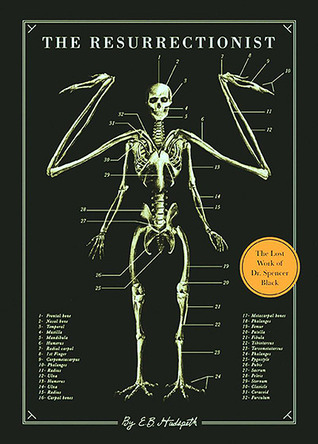Philadelphia, the late 1870s. A city of gas lamps, cobblestone streets, and horse-drawn carriages—and home to the controversial surgeon Dr. Spencer Black. The son of a grave robber, young Dr. Black studies at Philadelphia’s esteemed Academy of Medicine, where he develops an unconventional hypothesis: What if the world’s most celebrated mythological beasts—mermaids, minotaurs, and satyrs—were in fact the evolutionary ancestors of humankind?
The Resurrectionist offers two extraordinary books in one. The first is a fictional biography of Dr. Spencer Black, from a childhood spent exhuming corpses through his medical training, his travels with carnivals, and the mysterious disappearance at the end of his life. The second book is Black’s magnum opus: The Codex Extinct Animalia, a Gray’s Anatomy for mythological beasts—dragons, centaurs, Pegasus, Cerberus—all rendered in meticulously detailed anatomical illustrations. You need only look at these images to realize they are the work of a madman. The Resurrectionist tells his story.
So this was one of the most amazing books I have ever had the pleasure of holding. I am completely obsessed with mythologies of all cultures, and at one point I did want to be a biologist so this book is everything I could have ever wanted.
This is macabre, and fascinating. The amount of detail that went into this book is amazing to me. It actually feels, to me, like an actual medical journal. Something that could really exist.
But to get down to other things with this book, I found the second half more interesting than the story half. While the first half was very intriguing, the detail that went into drawing the biology of mythical beings was what really drew me to this book in the first place. This is a book that I could look over for hours and days without getting bored. Studying the anatomy of a Saytr, or a Dragon.
If you are into mythology and fantasy, this book might be something you'd want to pick up and have a look at. It is really great.

Dude, this sounds freaking awesome!
ReplyDelete